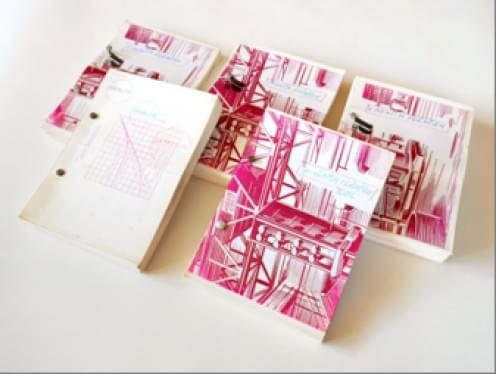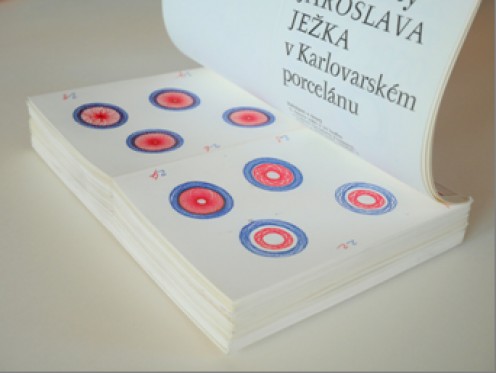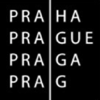Jindřich Novák: In a Smaller Diameter
11 Jul – 1 Aug 2016

This exhibition is taking place at the Art Archive as part
of the Polička/Shelf project.
Polička/Shelf is a not a large space, where we feature books – non-books. Works that often don’t fit in on ordinary shelves. They won’t fit – and not only just in terms of size.
These five thick books by Jindřich Novák (1923 – 2011) don’t fit in on a bookshelf, or among the other works of their author. July’s Polička/Shelf presents books created by binding together waste paper from the printing of invitations, on the back of which the artist drew designs using a spirograph. This instrument allows one to create a large, but not unlimited, number of impressive flower/mandala-shaped designs. But when a popular children’s toy gets into the hands of Jindřich Novák, he doesn’t joke around. The five books consist solely of countless mechanically created and meticulously numbered patterns. And so the reader’s enchantment is soon replaced by anxiety.
A joke is evanescent, of the moment – accompanied by lightness, often sans message. But the books of Jindřich Novák are bound using massive bookbinding bolts. And dozens of drawings in them are labelled with codes. Numerals that refer to the combination of instruments used, and which make the whole somewhat of an encyclopaedia of ornaments whose shapes are predetermined. Not by the artist, but by the toy’s manufacturer.
Anna Pleštilová










